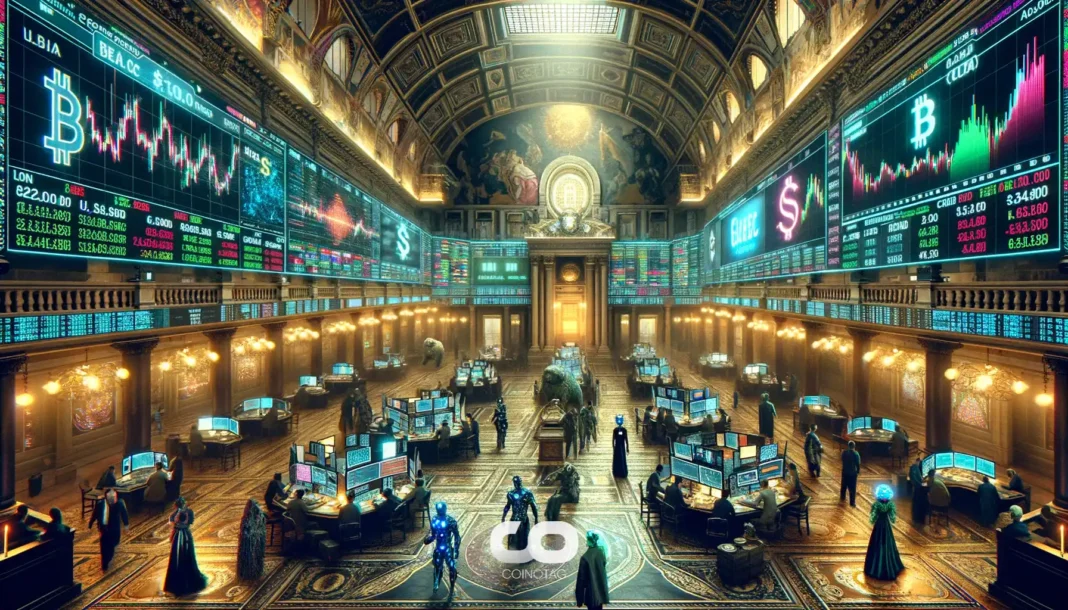Ripple RLUSD repo markets enable institutional repo trades by using RLUSD stablecoin and tokenized money market funds on the XRP Ledger, allowing investors to trade RLUSD for Franklin Templeton’s sgBENJI and access on-chain liquidity and yield through tokenized collateral.
-
Partnership: Ripple, DBS, and Franklin Templeton launch tokenized repo markets on the XRP Ledger.
-
Investors can trade RLUSD for the tokenized sgBENJI money market fund on DBS’s digital exchange to access yield and liquidity.
-
Ripple executives cite liquidity, collateral utility, and improved U.S. regulatory clarity as drivers; U.S. repo market volume was nearly $12 trillion in 2024.
Ripple RLUSD repo markets: trade RLUSD for tokenized sgBENJI on the XRP Ledger—learn how institutional repo trades unlock on-chain liquidity and yield. Read more.
Ripple teams with DBS and Franklin Templeton to launch tokenized repo markets using RLUSD and money market funds on the XRP Ledger.
- Ripple, DBS, and Franklin Templeton partner to launch repo markets using RLUSD and tokenized money market funds.
- Investors can trade RLUSD for Franklin Templeton’s tokenized sgBENJI fund on DBS’s exchange to access yield opportunities.
- Ripple’s Monica Long cites liquidity and utility as key drivers, while hailing regulatory progress in the U.S.
Ripple has announced a new partnership with DBS Bank and Franklin Templeton aimed at reshaping on-chain markets. The collaboration will introduce trading and lending solutions powered by Ripple’s RLUSD stablecoin and tokenized money market funds.
Through this initiative, investors will be able to use RLUSD to trade Franklin Templeton’s sgBENJI fund, tokenized on the XRP Ledger and listed on DBS’s digital exchange. The structure creates access to yield opportunities while opening new liquidity channels for digital assets. Ripple described this as a step toward scalable on-chain markets supported by tokenized collateral and stablecoins.
What are Ripple RLUSD repo markets and why do they matter?
Ripple RLUSD repo markets are on-chain repurchase agreement markets that pair RLUSD stablecoin with tokenized money market funds to create tradable, collateralized repo instruments. They matter because they can deliver institutional-grade liquidity, faster settlement, and broader access to short-term yield for market participants.
How will investors trade RLUSD for Franklin Templeton’s tokenized sgBENJI?
Investors on DBS’s digital exchange will be able to exchange RLUSD for tokenized shares of sgBENJI. Trades are settled on the XRP Ledger, using tokenized money market fund units as collateral. This mechanism allows repo counterparties to access short-duration yield while maintaining on-chain settlement and custody.
Key mechanics include tokenized fund issuance, RLUSD liquidity pools, and on-ledger settlement finality. The design aims to mirror traditional repo economics while improving auditability and speed.
In order for tokenized financial assets to solve the problems they’ve been promised to solve, we need both 1/ liquid secondary markets and 2/ utility for these assets (such as with collateralization). That’s exactly what @Ripple, @DBSbank and @FTI_Global are working towards with… — Monica Long (@MonicaLongSF) September 18, 2025
Why is this partnership significant for on-chain repo market potential?
Jack McDonald, CEO of Standard Custody and SVP of Stablecoins at Ripple, emphasized the scale of global repo markets—tens of trillions annually, with nearly $12 trillion recorded in the U.S. in 2024. Demonstrating a first repo trade between a tokenized money market fund and RLUSD signals practical application of blockchain tools to core financial plumbing.
The initiative could reduce settlement risk, increase collateral efficiency, and open repo participation to new counterparty classes that prefer on-chain instruments.
Frequently Asked Questions
Can institutions use RLUSD as collateral in repo trades?
Yes. RLUSD is being used as the settlement medium while tokenized sgBENJI units serve as collateral, enabling on-chain repo trades with the legal and operational frameworks supported by custodial and exchange infrastructure.
Does this require changes to existing custody or compliance processes?
Institutions will integrate token custody and digital asset compliance with existing workflows. Custodians and exchanges involved (DBS, Franklin Templeton, Ripple) will manage regulatory and custody requirements in coordination with institutional participants.
Key Takeaways
- Institutional bridge: The partnership links RLUSD and tokenized money market funds to create on-chain repo markets.
- Practical milestone: First repo trade between a tokenized money market fund and RLUSD demonstrates operational feasibility.
- Regulatory context: Executives highlight evolving U.S. regulatory frameworks as key to broader adoption.
Conclusion
The Ripple, DBS and Franklin Templeton collaboration advances tokenized repo markets by pairing RLUSD with tokenized sgBENJI on the XRP Ledger. This development addresses liquidity and collateral utility while aligning with emerging regulatory clarity, marking a pragmatic step toward institutional on-chain finance. Watch for additional integrations and pilot outcomes.






